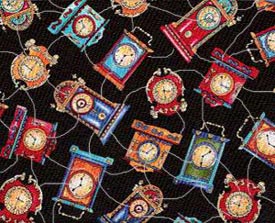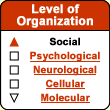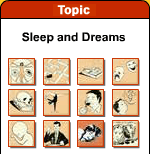|
|


In experiments
where subjects were isolated in caves for long periods,
scientists have observed that several physiological parameters,
such as body temperature, continue to follow a cycle
of about 24 hours, but the autonomous sleep-wake cycle
becomes longer, with a period of about 25 hours.
As a result, these physiological parameters gradually get out
of phase with the sleep-wake cycle. The lowest body temperature,
for example, instead of occurring at the end of the night as
it normally does, may occur while individuals are wide awake,
thus diminishing both their comfort while awake and the quality
of their sleep—symptoms quite similar to those of jet
lag or those experienced by people who work night
shifts. |
|
|
What physiological processes lie behind the many
disagreeable symptoms that people experience when they take
an airplane flight across several time
zones? Today’s scientific understanding of the cause
of these symptoms, collectively known as jet lag, is based on
the fact that the human body contains not one but several biological
clocks distributed throughout its various tissues.
All of these clocks contain genes
that produce proteins that form negative feedback loops affecting
their own production, thus creating an endogenous oscillating
rhythm, or cycle. These endogenous cycles last approximately
24 hours, which is why they are also called circadian rhythms
(from the Latin circa and dies, meaning “about
or around a day”). These cycles normally follow the alternating
pattern of day and night and are entrained (regulated) by a variety
of factors, the most important of which is daylight.
In humans, the intensity of the ambient light
directly affects the brain’s suprachiasmatic
nuclei (SCNs) through certain
specialized ganglion cells in the retinas. The SCNs are thus
directly entrained by daylight and act as the central biological
clock with which all of the body’s other, peripheral
clocks are synchronized. This synchronization is achieved in
various ways, depending on the tissue involved. Sometimes it is
achieved very quickly, through the autonomic nervous system. Other
times it is achieved much more slowly, through the secretion of
hormones, such as glucocorticoids or ACTH, into the bloodstream.
One of the proposed explanations for jet
lag is that it occurs when the body’s various biological
clocks get out of phase with one another, because they take differing
amounts of time to become synchronized with the ambient light levels
in the destination time zone. The central clock in the SCNs does
resynchronize very quickly after a sudden change in the light cycle.
But the peripheral clocks seem to adjust much more slowly. Part
of the reason for this slower adjustment and the resultant dephasing
may be the time it takes for the signals from the SCNs to reach
the peripheral clocks. Experiments with mice have confirmed this
decoupling of the peripheral clocks from the central clock when
a sudden change occurs in the regularity of an entraining factor
such as eating or daylight.
Studies with rats suggest another possible
source of lag that causes the body’s clocks to become desynchronized. Like
many other structures in the brain, the
suprachiasmatic nuclei have now been shown to be composed of several
different regions. The ventral region of each SCN receives
afferences directly from the ganglion cells of the retina. Researchers
have shown that in rats, the ventral SCNs seem to be reset much
more quickly by a sudden change in light than the dorsal SCNs.
Thus, a time lag may be created within the
central clock itself, between the ventral SCNs and the dorsal SCNs.
In practical terms, this means that for several days after someone
flies across several time zones, the peripheral clocks that receive
signals from his or her SCNs will be exposed to more complex patterns
of electrical activity than they are used to. These structures
may then in turn cause other physiological functions to go out
of phase, thus contributing to the symptoms of jet lag.
 |
Thus, whereas scientists once thought
the body’s biological rhythms were driven by a single,
central biological clock located in the suprachiasmatic nuclei,
they now embrace a model in which the SCNs act like the conductor
of an orchestra, and all of the body’s peripheral clocks
act like the musicians. And studies of jet lag have further
revealed that the SCNs themselves may be seen as systems
composed of several distinct but interconnected functional
units. |
The biological clock is thus much more like
a network of multiple oscillators, some of which adjust to changes
in light levels quickly, others of which do so more slowly, and
still others of which are regulated less by light than by other
factors such as food.
|
|





